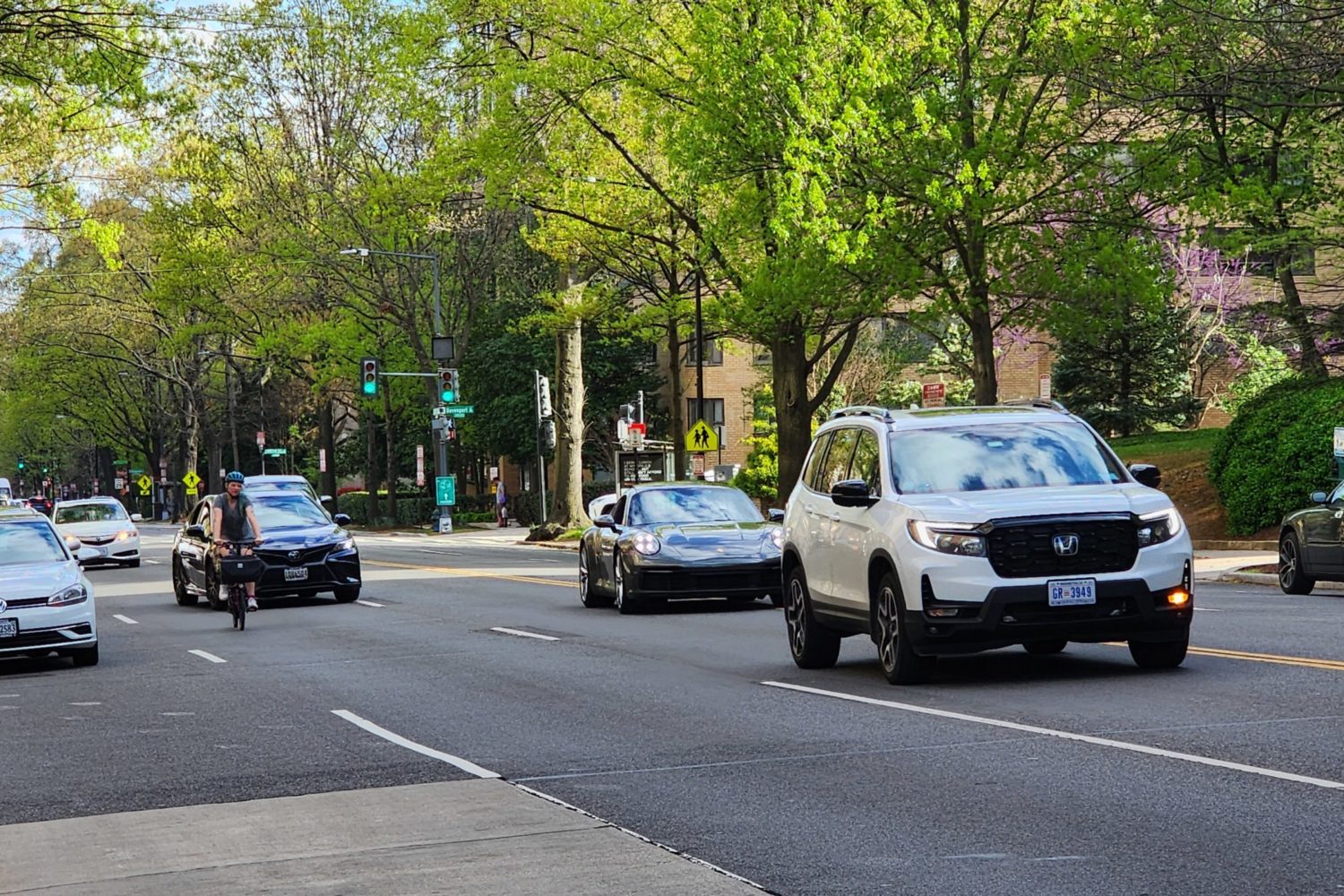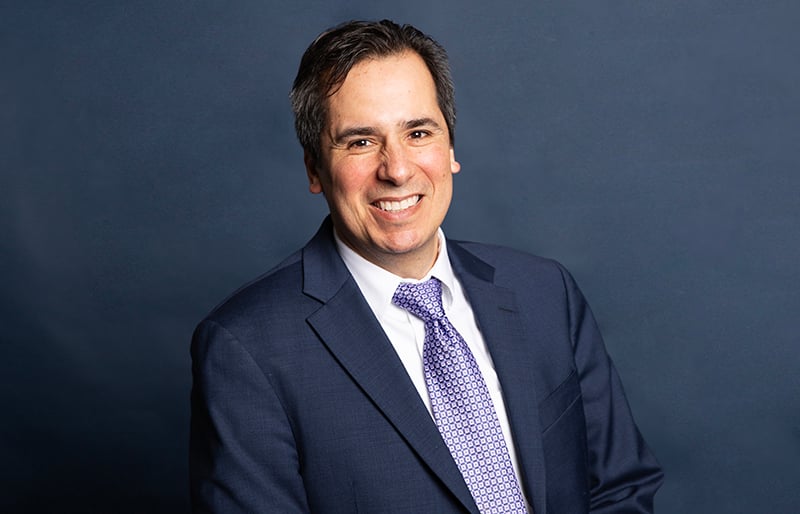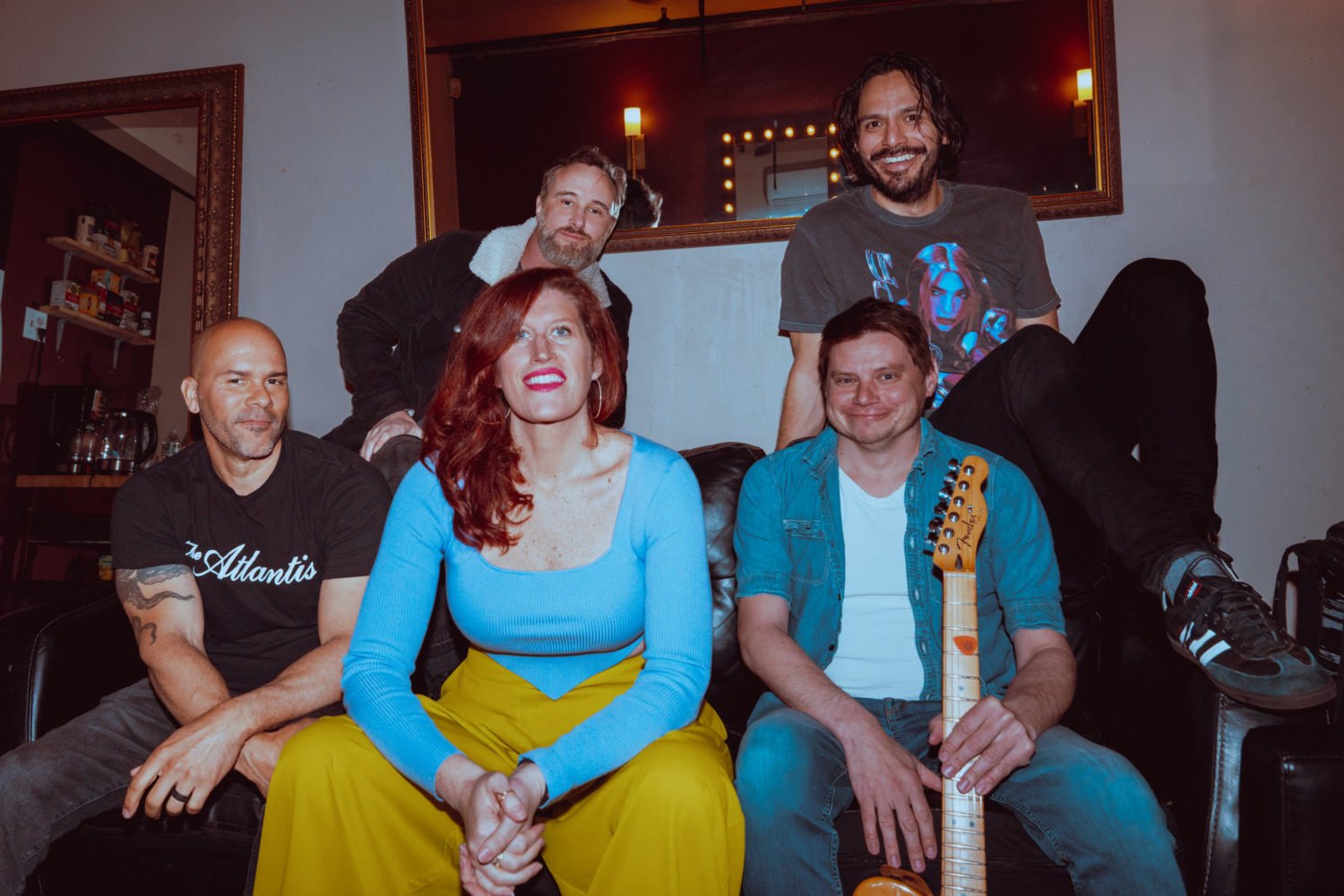Earlier this year, leaders of the American black community, representing 12 percent of the nation’s population, held their first meetings to consider whether to run their own candidate for President in 1984. The meetings drew immediate national attention because they represented a threat to Democratic party unity.
Shortly afterward, 175 prominent Democratic women dispatched a warning of their own to all the male Democratic presidential hopefuls. Armed with the much more impressive statistic that women make up 51 percent of the population, they served notice on their party’s White House aspirants that women, like blacks, do not intend to be taken for granted in next year’s election. But in contrast to the threat of a black presidential candidacy, the women’s edict seemed mere rhetoric.
“The outcome of the 1984 election,” the Democratic women leaders wrote, “may well be decided by the women’s vote. As a majority of the electorate, we women have it in our power to choose the next President of the United States as well as the Democratic party’s nominee for that office .. . . Whether women turn out, turn off, or turn elsewhere in the political spectrum depends on the choices and programs offered us.”
The women submitted a laundry list of issues on which they demanded specific answers from each of the candidates for the Democratic nomination. But the action fell far short of the challenging shot the black leaders were firing across the party’s bow. Why?
The answer is a surprising one from a women’s political movement that has mushroomed over the last decade: The women leaders acknowledge they simply aren’t ready to go for the big one. This is so in spite of the fact that the latest Gallup poll shows 80 percent of those surveyed—men and women alike—say yes to this question: “If your party nominated a woman for President, would you vote for her if she was qualified for the job?” In 1937, only 31 percent said yes. But getting the nomination is a very big “if.”
For one thing, womeri are more intimidated than black leaders have been by the argument that a bloc candidacy could be so divisive as to assure the re-election of Ronald Reagan. Getting President Reagan out of the White House is at the top of the women’s movement agenda in 1984.
”The problem,” says former representative Bella Abzug, now head of Women USA, “is that our people are very anxious to beat Reagan. There is tremendous unhappiness with him and his cuts in the budget affecting women.” Judy Goldsmith, president of the National Organization for Women (NOW), says her group’s “overwhelming imperative in 1984 is to get rid of Reagan.” And Gloria Steinem, editor of Ms. magazine, cites ”a great fear of helping Reagan” by embarking on what all acknowledge would be a symbolic gesture right now. Because black leaders have a greater percentage of unregistered voters in their ranks than do women, Steinem suggests, they may be more willing than women to consider a candidacy essentially as a spur to voter registration—even if, in the end, it helps Reagan.
• • •
But what if the President should decide not to seek re-election? The consensus is that even that is not likely to trigger a woman’s candidacy for President in either party in 1984. As much as women’s movement leaders deplore the fact, most agree with Representative Barbara Mikulski of Maryland that the “cultural barriers” in the society are too high to overcome. Women, Judy Goldsmith says, must face “a pragmatic reality … a tremendous burden of sexism in people’s thinking.”
Also, women leaders note that the movement’s political strategy has been to build from the ground up, electing women at local and state levels first—”our farm program,” Frances Barnard, former co-chair of the Women’s Campaign Fund, calls it. That strategy in part grew out of the long and so far unsuccessful effort to win ratification of the Equal Rights Amendment. For the ERA to succeed, it was determined that its foes had to be defeated and friends elected in state legislatures around the country.
That focus has been effective in getting women elected to the legislatures, if not in advancing ERA. Women’s ranks in legislatures have doubled from 1973 to 1983, and tripled to about 9 percent of all public officeholders. But women largely have been thwarted in their bid to attain the traditional stepping stones to the presidency—seats in the US Senate and in the major state governorships. There are only two women in the Senate (Nancy Kassebaum of Kansas and Paula Hawkins of Florida, both Republicans) and no governors (although Lieutenant Governor Martha Layne Collins is the Democratic nominee in Kentucky).
“There hasn’t been any great encouragement for women in higher office,” Abzug says. “So women don’t put themselves forward for top leadership in the way they should. It’s understandable because there’s a lot of resistance . . . and after many years of being outside, it’s difficult to be bold enough about it. We make strides, but there’s no structure for a woman to run for President. That structure is decisionally male. If there were more women in the Senate, it would be a much more logical and perceptible step.” Goldsmith adds: “Women have not really been in the political pipeline. We’ve seen [only] the beginning of it.”
The Abzugs, Goldsmiths, and Steinems do not, obviously, represent all American women. Phyllis Schlafly, the point-lady of the anti-ERA campaign and self-appointed guardian of women’s traditional family role, says facetiously that there is no reason to have a woman run for the White House because “we’ve already had a woman President. Her name was Rosalynn Carter.”
• • •
Schlafly says women haven’t occupied the stepping stones to national office, and won’t in any sizable number in the future, simply because they have “different career priorities.” Gains have been made in state legislatures, she insists, not because of the efforts of the women’s movement but “because women can go home at night” to husband and family. Such political ambition, she says, “doesn’t necessarily translate into women wanting to go to Washington.”
Leaders in the women’s movement, predictably, scoff at Schlafly’s observations. The problem, they say, has not been insufficient ambition or fear of homesickness, but lack of experience and money, plus that old bugaboo—sexism.
Abzug suggests that male politicians don’t mind women running for public office until women run against them, particularly for higher offices. Negotiating primaries is especially difficult for women, she says, because they seldom get the backing of ”the institutional power structures” in their states. (She herself failed in the New York Democratic senatorial primary in 1976, losing narrowly to Daniel P. Moynihan.)
Moreover, women do not enjoy the solidarity and cohesion that black leaders can claim—and were able to demonstrate in the election of Harold Washington as mayor of Chicago. Kathy Wilson, chair of the National Women’s Political Caucus and a Republican, notes that blacks have been voting in blocs for years, but the phenomenon of the gender gap has emerged in a clear-cut way only since 1980. “If the gender gap proves a reality in 1984,” she says, “women may realize their strength and get together on a candidate for 1988. We’re on the brink of a political explosion.”
Maybe so, but as of now the gender gap represents not so much women’s solidarity as a greater preference among women for Democratic candidates. Exit polls in the 1980 election indicated a 16 percent gap between men and women for Reagan. And a study of 1982 congressional voting by the Political Studies Center at the University of Michigan concluded that 60 percent of women voters preferred Democratic House candidates compared to 54 percent of men voters. Such statistics, while they are bad news for the Republican party, are a far cry from establishing that women are ready to vote solidly for one of their own.
Although polls indicated strong support from women for the ERA, plenty of women were against it. But Goldsmith insists that ”the problem was not lack of support from women or the general public, but a failure of the democratic process,” with state legislatures unduly influenced by special interests such as the insurance business. “It was never Phyllis Schlafly and the ladies with blue hair and pink polyester suits who defeated it,” she says. Wilson insists that the drive for the ERA, in fact, was largely responsible for ”the politicization of women, the glue” that held them together.
But political consultant John Deardourff, whose firm worked for ERA ratification in key states, says, “We found a substantial percentage of women who were less willing to support the idea of an expansion of women’s role” in the political area. Also, he says, he found that many women over age 35, married, and with little advanced education “felt very threatened by educated women. Liberation was not what they were looking for. Security was the reason they got married early.” These are the women who also see Schlafly as their defender, and they are not about to flock to the polls to vote for a woman just because she’s a woman—and especially not if she’s an outspoken feminist.
• • •
If not a woman President, how about a female Vice President?
Abzug, Mikulski, Wilson, Steinem, and a few others have been talking about using the clout of the women’s movement to place a woman on a national ticket next year. With the expectation that Reagan will run again and will keep Vice President George Bush on the GOP slate, the focus has been on the Democratic ticket. The most advanced plan is to have national convention delegates who are pledged to a particular presidential candidate support a woman as the nominee’s running mate. Because by party charter half the Democratic convention delegates will be women, this approach cannot be dismissed out of hand. It could create a hell of a row in San Francisco next July.
Even without such a strategy, women’s organizations will be working to have as many of their own members as possible selected as convention delegates to push for the inclusion of women’s issues in the party platform. Thirty-eight of the women’s rights organizations, representing 15 million women, are engaged m a nonpartisan voter-registration effort bearing the slogan, “It’s a man’s world, unless women vote.”
Eleven years ago, then-Representative Shirley Chisholm of New York ran in the Democratic primaries as a presidential candidate and Frances (Cissy) Farenthold of Texas was advanced as a vice-presidential candidate for the McGovern ticket. Both efforts were clearly symbolic and got nowhere. This time around however’ political realities suggest that the Democratic nominee will have to come up with a good rationale for by-passing a woman. Indeed, he may well see virtues in selecting a woman that were not apparent to any standard-bearer a decade ago.
Robert Teeter of Detroit, the Republican pollster, says he thinks the most likely route to the presidency for any woman in either party will first be by way of the vice presidency. Teeter recalls that President Gerald Ford in 1976 placed former ambassador Anne Armstrong on his serious short list of vice-presidential prospects, but the polling data then suggested her selection might have been more a negative than a positive in vote-getting.
Next time, however, Teeter says, the reading may be entirely different. In the 1980 election, he says, data indicated for the first time that a qualified, well-known woman might have been more a plus than a minus. And there is always the possibility, he adds, that a presidential nominee “30 points behind in the polls entering the fall campaign might decide to go for the long ball”—that is, take a big gamble and hope that a female running mate would turn the election around. One reason that gamble might be worth taking now is that in 1980 for the first time more women than men voted (59.4 million women, 59.1 million men).
• • •
Women’s leaders are quick to take offense at any suggestion that the country isn’t ready for a woman on the national ticket-or that a woman isn’t ready. When Democratic National Committee chairman Charles Manatt this spring was quoted (misquoted, he claimed later) as saying he thought his party might well choose a black or a woman for Vice President by the year 2000, both black and women’s leaders jumped on him as being gratuitous and patronizing.
Presidential aspirants being the way they are, Senator Ernest Hollings of South Carolina was quick to blast Manatt for his alleged statement. Hollings said the Democrats should strongly consider a woman vice-presidential candidate, such as Steinem, Mayor Dianne Feinstein of San Francisco, former representative Barbara Jordan of Texas, or Katharine Graham, board chairman of the Washington Post. Hollings, however, didn’t pledge that if he became the Democratic presidential nominee he would choose a woman to run with him. Neither have any of the other Democratic presidential candidates.
Manatt now says that ”there is every reason to believe . . . that the right woman would do very well” on the Democratic ticket. He says it is “within the realm of possibility” that the Democrats might pick a woman for Vice President next year.
Republican National Committee chairman Frank Fahrenkopf, looking past 1984 when he expects a repeat Reagan-Bush ticket, says he sees nothing to prevent a woman from getting the nomination for President or Vice President in his party. The GOP, he says, has “been the party of.opportunity for women. I’m willing to venture a guess that the first time a woman is a presidential or vice-presidential candidate, she will be in the Republican party.”
• • •
On the Republican side, with a Reagan-Bush ticket anticipated, any talk of a woman for Vice President (and there is very little of it) almost inevitably comes down to the one woman who has the requisite name identification and job experience to single her out from the crowd-Supreme Court. Justice Sandra Day O’Connor. Although the women’s movement was pleased with her appointment to the high court, she has not been identified with that movement. Movement women might prefer somebody like Nancy Kassebaum, considered a moderate and a supporter of ERA. (The other GOP senator, Paula Hawkins, would severely test the loyalty of many women in the movement if she ever got the nod. She has been an ERA foe and is called by sister Republican Kathy Wilson “a killer in a size-nine dress.”)
Another popular choice with many Democratic as well as Republican women would be Jill Ruckelshaus, a member of the US Commission on Civil Rights and wife of William Ruckelshaus, the man who came to Reagan’s rescue as second-time director of the beleaguered Environmental Protection Agency. “I’d elect Jill to anything, including President,” says Betsy Griffith, Republican co-chair of the Women’s Campaign Fund. “But whether she could get the nomination and get elected is another thing.” Teeter says he expects that whoever is the first woman on a national ticket “won’t be a flaming feminist,” which Jill Ruckelshaus might well be considered, especially in the GOP.
Although the Republican party has had its arguments with the women’s movement, some political experts agree with Fahrenkopf that there is a greater likelihood that the Republicans will be the first to run a woman for Vice President. Among them is Wilson, who candidly says her party is ”more calculating” and might take the plunge. She calls the O’Connor appointment to the Supreme Court “a splashy coverup” for the Reagan administration’s failure to appoint more women to important government positions, and puts in the same category the back-to-back naming of Margaret Heckler and Elizabeth Hanford Dole to the Cabinet in second-string posts. Steinem calls such Republican appointments “change without content.”
Teeter agrees that it’s likely to be the Republicans first, because their nominating process is more controlled and they are more likely to find a suitable, moderate woman candidate. Deardourff, who works mostly for Republicans, disagrees. He argues that the Democrats, always seeking coalitions, might be more likely to reach out for a woman, but he too doubts the choice would be a feminist of extreme views.
Not too surprisingly, Schlafly doesn’t think much of the idea of women trying to pressure one of their own onto one of the national tickets. Women voters, like men, will be motivated to back a particular individual, not a symbol, she says. Then she asks a question that needs no answer: “You don’t think members of NOW would support me because I’m woman, do you?”
• • •
While running a woman for President may be an idea whose time has not quite come, going after the second spot seems much more than a pipe dream. For one thing, activist women are less gun-shy about the prospect. Steinem says: “Reagan, Nixon, Carter, and Ford have managed to demystify the presidency, so that we approach it with less humility.”
And, with some heat, Goldsmith says: “Somewhere in this we have to look at and recognize the profound absurdity that in a time of national crisis we ask not whether a person is qualified, but what sex she is. . .. [Any woman] is going to have to be overwhelmingly overqualified in order to defeat a man. But has the record of male Presidents been so sterling and outstanding that we believe a woman wouldn’t do as well? How dare people even ask? I have no ambitions in that direction, but if I couldn’t do better than Ronald Reagan, I’d go out to pasture and take up crocheting.”
This article appears in the August 1983 issue of The Washingtonian.

















